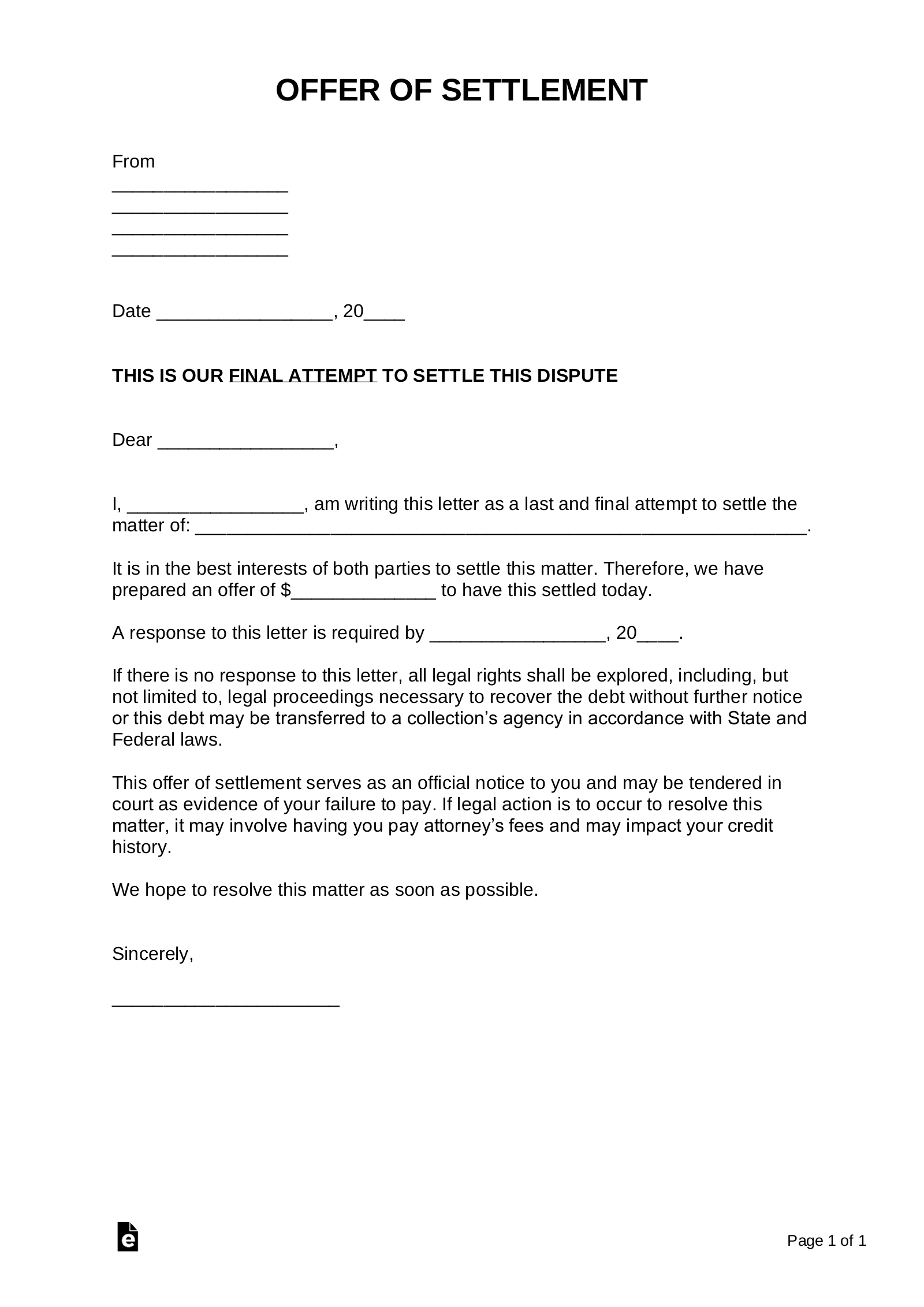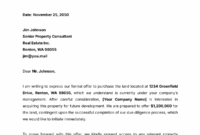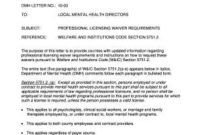Dealing with a dispute, whether it’s a minor disagreement or a significant conflict, can be incredibly stressful and time-consuming. Nobody wants to spend their precious time and resources entangled in legal battles or endless back-and-forths. This is where a strategic approach to conflict resolution comes into play, offering a path to closure without the added burden of court.
One of the most powerful tools in your arsenal for resolving disputes amicably and efficiently is an offer to settle letter. It’s more than just a formal document; it’s a proactive step towards taking control of a difficult situation, clearly articulating your proposal for a fair resolution, and often, avoiding the escalation that can lead to more complex and costly proceedings.
Why an Offer to Settle Letter Can Be Your Best Friend
When you’re facing a disagreement, the thought of formal legal action can be daunting. An offer to settle letter provides an invaluable alternative, serving as a clear, concise communication that outlines a proposed resolution before things get out of hand. It signals to the other party that you are serious about finding a common ground and are willing to negotiate, potentially saving both sides significant time, money, and emotional strain that often comes with prolonged disputes. This approach can also help preserve relationships, which is especially crucial if the dispute is with a business partner, neighbor, or former colleague.
Beyond the practical benefits, sending a well-crafted settlement offer demonstrates your reasonableness and good faith. This can subtly shift the narrative of the dispute, showing that you are not just making demands but are actively seeking a constructive solution. It puts the ball in the other party’s court, requiring them to consider your proposal seriously and respond, thereby keeping the lines of communication open and focused on resolution rather than confrontation. It’s about being strategic and forward-thinking in how you manage conflict.
A crucial aspect of any effective settlement offer is its clarity and completeness. It needs to lay out exactly what you are proposing, the terms under which you are willing to settle, and what you expect in return. Without this level of detail, your offer might be misunderstood or dismissed. Think of it as painting a full picture of your desired outcome, leaving little room for ambiguity, which is essential for a productive negotiation.

Moreover, having a documented offer to settle letter provides a clear record of your attempts to resolve the matter. Should the dispute unfortunately escalate to court, this letter can serve as evidence of your efforts to avoid litigation, which can sometimes be viewed favorably by a judge. It’s a tangible demonstration of your willingness to compromise and reach an out-of-court agreement, reinforcing your position as a reasonable party.
Key Elements to Include in Your Offer
- Clearly identify all parties involved in the dispute.
- Provide a brief, factual summary of the dispute’s background.
- State your specific offer for settlement, outlining exact terms and conditions.
- Include a deadline for response to encourage timely consideration.
- State that the offer is made “without prejudice” to protect your position if the offer is not accepted.
- Specify any desired actions or concessions from the other party.
Crafting Your Offer to Settle Letter Template: A Step-by-Step Guide
Before you even begin writing your offer to settle letter, take some time to assess your situation thoroughly. What are your non-negotiables, and what are you willing to compromise on? Understand the strengths and weaknesses of your position and the other party’s. This preliminary self-assessment is vital for formulating a realistic and attractive offer that has a higher chance of acceptance. It’s about knowing your limits and setting achievable goals for resolution.
Once you have a clear understanding of your position, structure your letter logically. Start with a formal salutation and clearly state the purpose of your letter: to make an offer of settlement. Provide a concise, objective summary of the facts of the dispute, ensuring that your account is neutral and avoids emotional language. This factual foundation sets a professional tone and ensures both parties are referencing the same understanding of the events leading to the dispute.
The heart of the letter is, of course, the offer itself. Be incredibly precise in detailing what you are proposing. If it involves money, state the exact amount. If it involves an action, describe it clearly. Specify any conditions or timelines associated with your offer. Remember to include a deadline for their response, as this creates a sense of urgency and encourages prompt action. A well-defined offer prevents confusion and allows the other party to evaluate it efficiently.
Finally, consider the closing of your letter. Reiterate your desire for an amicable resolution and express your hope that the offer will lead to a positive outcome. It’s also wise to mention that if the offer is not accepted, you reserve all your rights to pursue other legal avenues. Maintain a professional and respectful tone throughout, as this can significantly influence the other party’s willingness to engage constructively. Crafting an effective offer to settle letter template is about clarity, respect, and strategic communication.
Tips for Effective Communication
- Be clear and specific about your offer and expectations.
- Maintain a professional and respectful tone throughout the letter.
- Set a realistic deadline for the other party’s response.
- Keep a copy of the letter and any related correspondence for your records.
- Consider having a legal professional review your draft, especially for complex disputes.
Taking the initiative to present a well-thought-out offer to settle letter can significantly alter the trajectory of a dispute, steering it away from protracted conflict and towards a mutually agreeable resolution. It empowers you to actively participate in finding a solution, rather than passively waiting for events to unfold, providing a degree of control over an often uncontrollable situation.
By carefully preparing and presenting a clear settlement proposal, you are not just making an offer; you are opening a door to constructive dialogue and demonstrating a commitment to ending the conflict efficiently. This approach not only saves resources but also fosters a more positive and collaborative environment for moving forward.



